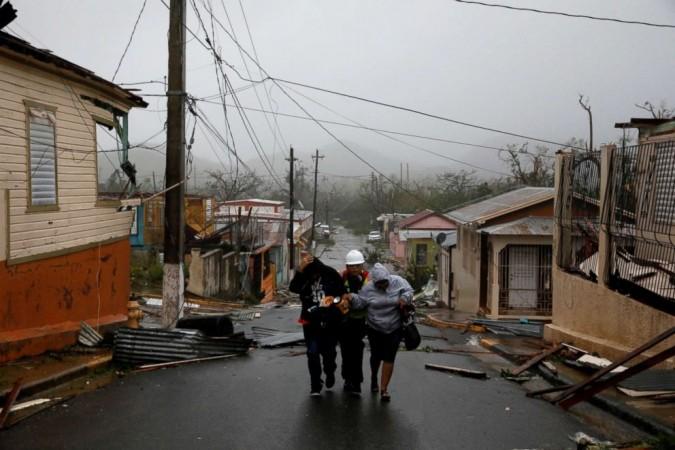Hurricane Maria plunged the entire of Puerto Rico into darkness when it hit the island, severely affecting its energy grid on Wednesday. Governor Ricardo Rosselló has said it may take months restoring power to everyone in the region, according to CNN.
The governor said the entire electrical system is down and that no one on the island has power from utilities. Hurricane Maria is the biggest storm to make landfall on the island in almost a century.
Rosselló told Anderson Cooper 360 that Puerto Rico, which has been through a long recession, has a power grid which is a "little bit old, mishandled and weak."

"It depends on the damage to the infrastructure," he said. "I'm afraid it's probably going to be severe. If it is ... we're looking at months as opposed to weeks or days."
The head of the disaster management agency, Abner Gómez, said none of the customers of Puerto Rico's Electric Power Authority had any electricity.
The US National Hurricane Center (NHC) said "catastrophic" flooding was sweeping parts of the island, which is home to 3.5 million people. Maria however is now moving away from Puerto Rico, weakening to a Category-2 storm.

"When we are able to go outside, we are going to find our island destroyed," Gómez was quoted as saying by the El Nuevo Dia newspaper. "It's a system that has destroyed everything in its path."
The hurricane has reportedly claimed 14 lives in the island of Dominica, which faced the full force of the storm before it passed to the US territory, a government spokesman Charles Jong told CNN.
The spokesperson said Hurricane Maria was the "most horrifying experience" he had ever faced, despite witnessing other hurricanes.
He added that people in Dominica have "gone into survival mode" as the island is out of power, food and water; and there are reports of widespread looting everywhere.

















